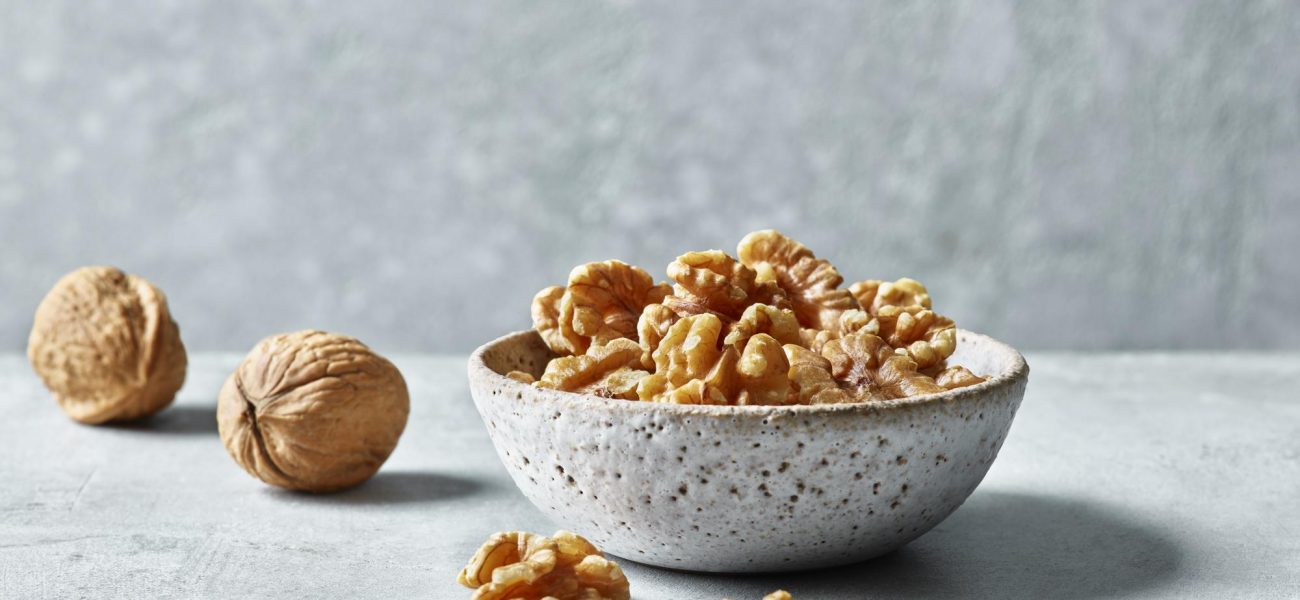Storing food correctly not only helps to maintain flavour and nutrition, but also contributes to the battle against food waste – which currently sees us throw away over seven million tonnes of food a year¹. Sometimes, it can be tricky to know which foods should be kept in the fridge, freezer or cupboard, or if certain foods should be stored apart. Food Safety and Nutrition Consultant, Barbara Bray and Director Regulatory and Technical Affairs of California Walnuts, Carl Eidsath share storage hacks for five of our favourite health foods.
Walnuts
Walnuts kernels are best stored in either their original packaging or an airtight container in the fridge or freezer, rather than the kitchen cupboard. Walnuts will last up to 6 months when kept in the fridge (2°C-5°C) and up to 12 months in the freezer. Storing walnuts in the kitchen cupboard can reduce shelf-life and taint flavour.
Eggs
The best way to store eggs for freshness and quality is to keep them at a constant temperature below 20°C. At home, this should be done in the fridge. Eggs are not refrigerated in the supermarket so that the temperature stays fairly stable until you get them home. Put them in the fridge in their original packaging as this prevents them from picking up strong odours from other foods. If you do take them out of the box, check that you are using them in date order. When it’s time to cook them, remember to remove them from the fridge around 30 minutes before cooking as a sudden change in temperature can crack the shells or lead to reduced binding quality in baking².
Tomatoes
The flavour and quality of tomatoes really comes out at room temperature, so when you get them home, take them out of the plastic wrapper or packaging and pop them in a fruit basket. They are sensitive to the plant hormone given off by both bananas and avocados so do keep them apart. Tomatoes are sub-tropical fruits and really don’t like the cold. They continue to ripen after they have been picked and over-ripe tomatoes will soften more quickly once refrigerated³.
Potatoes
Correct storage is important for both nutrition and safety. Potatoes become green when they are stored in the light and this indicates that plant toxins are present which can be harmful if consumed. Normally, the green is only in the skin so it can be peeled off before cooking. Storing potatoes in hessian or brown paper bags in a cool airy place keeps them in good condition. Although they need to be kept cool, refrigeration is not ideal because the low temperature reduces the level of healthy resistant starch* slightly over time and sugars develop. Whilst it isn’t a health issue, it is better to keep good levels of resistant starch in potatoes as this is beneficial for gut health⁴.
Dark Chocolate
Eating a small amount of dark chocolate helps top up your antioxidant levels, but it does mean if you buy a large bar, it needs to be kept in a cool dry place to stop it from going stale before you finish it. Refrigeration is not good for chocolate quality because it causes fat bloom, which isn’t harmful but does spoil the appearance. Place in an airtight container without any strong-smelling items such as spices, otherwise the chocolate will pick up the flavour⁵ ⁶.
For more information on California Walnuts and recipe ideas, visit californiawalnuts.co.uk
* Resistant starch (RS) is a form of starch that cannot be digested in the small intestine. As a result, it is classified as a type of fibre. RS passes through the small intestine intact and is then fermented in the large intestine, producing short chain fatty acids (SCFA) which serve as an energy source for colonic cells. Foods that increase the amount of SCFAs in the colon are thought to be beneficial to health by helping to prevent the development of abnormal cells in the gut⁷.
1 wrap.org.uk/content/household-food-and-drink-waste-uk-0
2 egginfo.co.uk/
3 britishtomatoes.co.uk/
4 cookyourownpotatoes.org.uk/knowledge-and-skills
5 worldcocoafoundation.org/
6 Nightingale, L. M., Lee, S. Y., & Engeseth, N. J. (2011). Impact of storage on dark chocolate: Texture and polymorphic changes. Journal of food science, 76(1), C142-C153
7 nutrition.org.uk/nutritionscience/nutrients-food-and-ingredients/resistant-starch.html





















